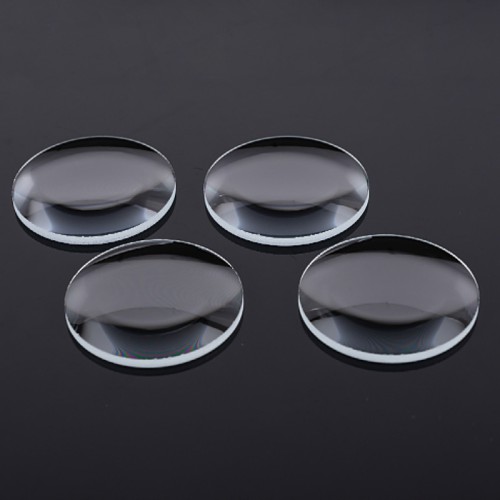Biconvex Lens
A biconvex lens is a type of lens with two convex surfaces, meaning both sides curve outward like the exterior of a sphere. These lenses are thicker at the center and thinner at the edges. Biconvex lenses are fundamental components in optics and are widely used due to their ability to converge (focus) light rays that pass through them, hence they are also referred to as converging lenses.
Tags: Optical Lens, Biconvex Lens
A biconvex lens is a type of lens with two convex surfaces, meaning both sides curve outward like the exterior of a sphere. These lenses are thicker at the center and thinner at the edges. Biconvex lenses are fundamental components in optics and are widely used due to their ability to converge (focus) light rays that pass through them, hence they are also referred to as converging lenses.
![]()
Key Features of Biconvex Lenses:
1.Convex Surfaces:
Both surfaces of the lens bulge outward, resembling the external shape of a segment of a sphere.
2.Positive Focal Length:
Unlike biconcave lenses, biconvex lenses have a positive focal length because they cause parallel incident light rays to converge after passing through the lens, potentially forming a real image.
3.Image Formation:
Depending on the position of the object relative to the lens, a biconvex lens can form real inverted images (beyond the focal point), virtual upright images (between the lens and the focal point), or can magnify objects when placed close to the lens.
4.Magnification:
Biconvex lenses can produce both magnified and demagnified images, depending on the location of the object and the properties of the lens.
5.Correction of Vision:
In corrective eyewear, biconvex lenses are used to correct hyperopia (farsightedness), helping to bring the focus of incoming light forward onto the retina.
Applications of Biconvex Lenses:
1.Corrective Eyewear:
For individuals with farsightedness, biconvex lenses help to converge light entering the eye so that it properly focuses on the retina.
2.Cameras:
In camera systems, biconvex lenses are used to focus incoming light onto the film or digital sensor, capturing clear images.
3.Magnifying Glasses and Loupes:
Due to their ability to magnify, biconvex lenses are used in simple magnifiers and more complex devices like jeweler's loupes.
4.Telescopes and Microscopes:
In compound microscopes and refracting telescopes, biconvex lenses are often part of the objective or eyepiece systems to magnify and focus images.
5.Projectors:
In overhead projectors and slide projectors, biconvex lenses are used to project images onto a screen by converging light from a smaller source.'
Properties Influencing Function:
- Lens Material:
The refractive index of the lens material determines how much the light is bent as it travels through the lens.
- Curvature of the Surfaces:
The curvature of each surface affects the degree of convergence and the position of the focal point.
- Thickness:
The thickness of the lens, particularly the central part, influences its optical power and can affect aberrations like spherical aberration.
- Lens Separation (in Compound Lenses):
In multi-lens systems, the spacing between lenses also plays a significant role in the final image quality and focusing abilities.
Related Products
Biconcave Lens
Biconcave lens is a type of lens with two concave surfaces, meaning both sides curve inward like the..
Plano Concave Lens
Plano concave lenses are another type of optical lens with distinct characteristics compared to bico..
Plano Convex Lens
Plano convex lenses are optical lenses with one flat (plano) surface and one convex surface. This de..


